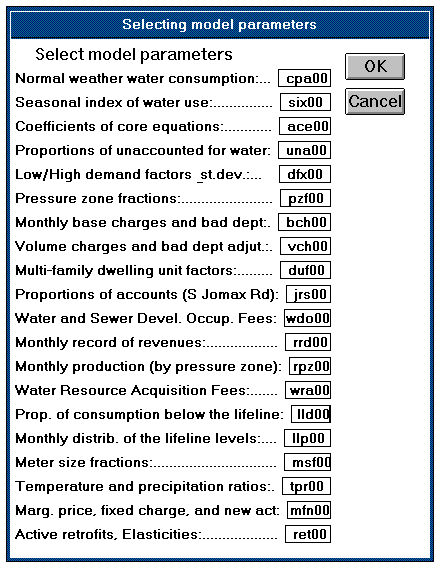
AN ANALYSIS OF MONTHLY WATER DEMAND
IN PHOENIX, ARIZONA
A forecasting model was constructed completely within a database system, Borland PARADOX, using Paradox Application Language (PAL). All model parameters and equations are stored in dbase files. Phoenix forecasting model makes the following calculations:
1 Monthly water production forecast
a) on-project, b) off-project and nonmember
2 Water production forecast: current and next fiscal year.
a) pressure zones A to D, b) pressure zones E to H
c) unknown or not coded in WCIS, on/off-project, and total service area.
3 Revenue projection: current and next fiscal year
a) base charge, consumption charge, and total water rate revenue,
b) resource acquisition fee, water and sewer development occupational fee.
c) summary report of 3a) and 3b).
4 Long-term projections for comparison to PHXMAIN
a) on-project, b) off-project and nonmember.
5 Monthly water consumption forecast.
a) single-family resid., b) multi-family resid., c) non-residential,
d) on-project, e) off-project and nonmember,
f) total service area.
6 Monthly forecast with and without demand adjustments
a) on-project/single-family, b) off-project/single-family,
c) on-project/multi-family, d) off-project/multi-family,
e) on-project/nonresidential, f) off-project/nonresidential.
Part of the project was described in my Thesis. Here are some chapters
extracted form the Thesis:
Since the prediction model is a spatial model, I attempted to incorporate it into GIS (Geographic Information System), ArcView.
Figure 1 shows ArcView dialog box that allows user to select model parameters for calculations of future water use.

Go to: Pawel Mizgalewicz Home Page